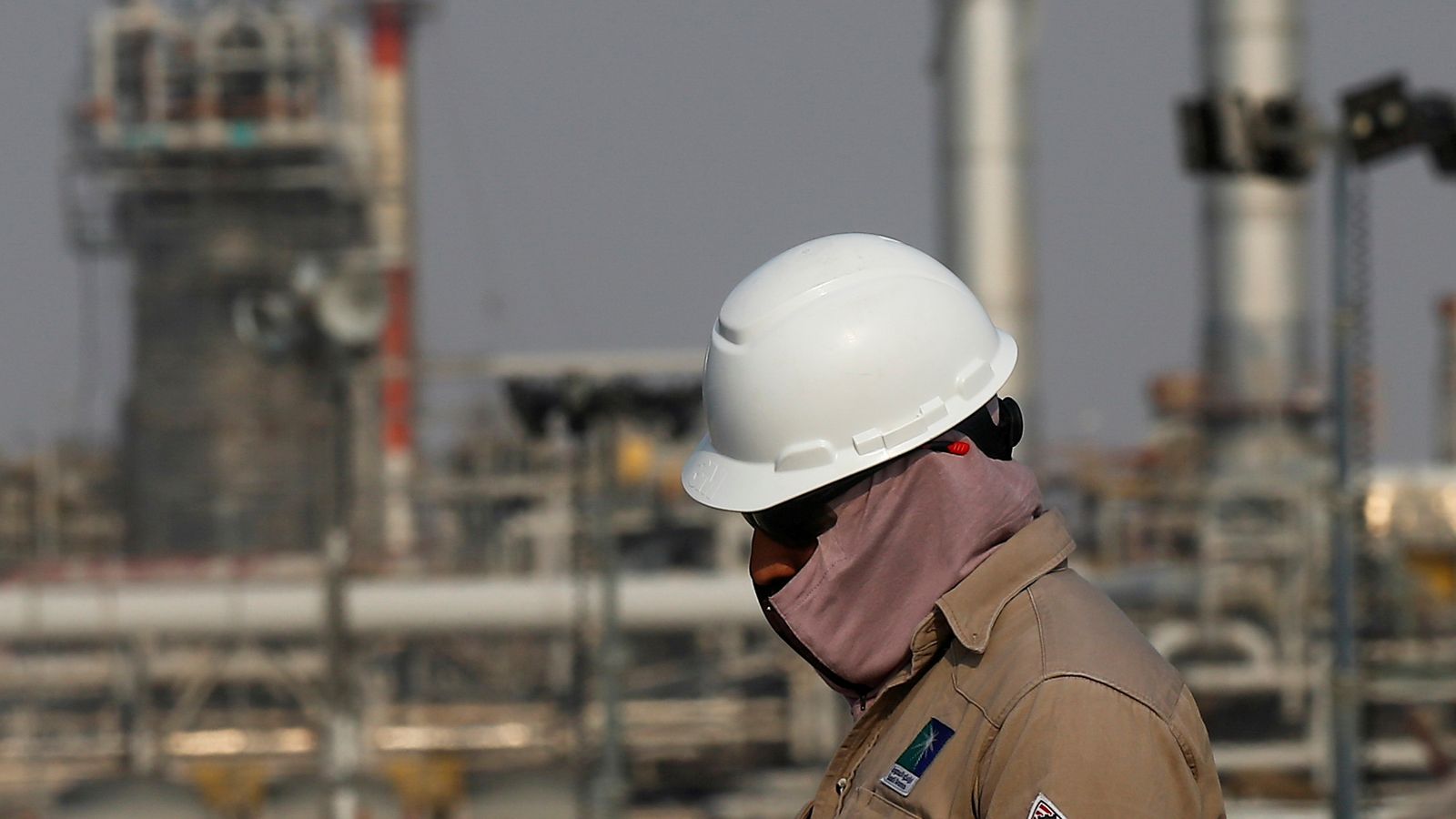Oil prices have taken a tumble after OPEC producers failed to agree a supply increase.
Brent crude fell $2.63 (3.4%) a barrel to $74.53, having hit a session peak of $77.84, its highest since October 2018.
West Texas Intermediate crude futures were down $1.79 (2.4%) to $73.37 after touching $76.98 earlier – its highest since November 2014.
On Monday, ministers from OPEC+ (the Organization of the Petroleum Exporting Countries and other producers such as Russia) walked away from talks after failing to resolve a dispute between the largest producer Saudi Arabia and the United Arab Emirates.
The United Arab Emirates had rejected a proposed eight-month extension to output curbs that OPEC+ had imposed on each other last year.
The curbs amounted to record output cuts of almost 10 million barrels per day (bpd) – about 10% of world output.
But the UAE wants to pump more oil and says its baseline was set too low when OPEC+ originally forged its production pact.
The fall in oil prices was attributed to fears that the UAE would step in and add barrels, forcing the other countries to follow and increase supply.
Some OPEC+ sources told Reuters news agency they still expected the group to resume talks later this month, but a date has not been officially confirmed.
Goldman Sachs has said the collapse of the talks introduced uncertainty to OPEC’s production path but it still expected Brent to reach $80 a barrel early next year.
After a crash for prices at the start of the COVID-19 pandemic, production curbs were agreed by the OPEC+ countries to help support their oil incomes.
But prices have been rising steadily this year as economies have reopened from pandemic-driven lockdowns.
Demand for oil, therefore, has lifted and so have prices.
But this has seen fuel costs rise for households, almost hitting eight-year highs.
It also worries central bank policymakers, because surging energy costs have been the main source of inflation, which is a potential barrier to economic recoveries.






















